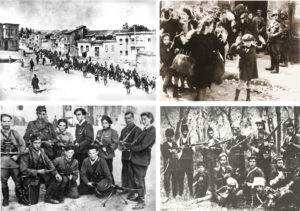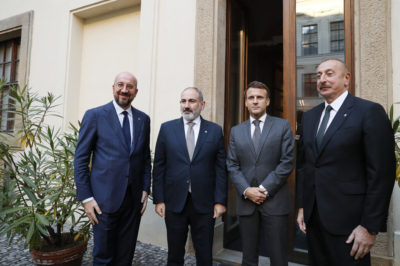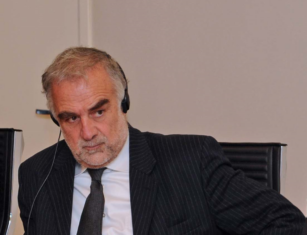 CAMBRIDGE, Mass. — Four scholars and researchers will speak at “From Musa Dagh to the Warsaw Ghetto: Armenian and Jewish Armed Resistance to Genocide,” on Thursday, March 31, at 8 p.m. at Harvard University, Science Center Auditorium D, 1 Oxford St.
CAMBRIDGE, Mass. — Four scholars and researchers will speak at “From Musa Dagh to the Warsaw Ghetto: Armenian and Jewish Armed Resistance to Genocide,” on Thursday, March 31, at 8 p.m. at Harvard University, Science Center Auditorium D, 1 Oxford St.
The featured speakers are Eric Bogosian, actor, playwright and author of Operation Nemesis: The Assassination Plot That Avenged the Armenian Genocide; Dr. Deborah Dwork, Rose Professor of Holocaust History and Director, Strassler Family Center for Holocaust and Genocide Studies, Clark University; Dr. Dikran Kaligian, managing editor, Armenian Review, and author of Armenian Organization and Ideology Under Ottoman Rule, 1908-1914; and Dr. James R. Russell, Mashtots Professor of Armenian Studies, Department of Near Eastern Languages and Civilizations, Harvard University. Marc A. Mamigonian, Director of Academic Affairs at the National Association for Armenian Studies and Research (NAASR), will serve as moderator.
This special symposium is co-sponsored by the Center for Jewish Studies at Harvard University, the Mashtots Chair in Armenian Studies at Harvard University, and the National Association for Armenian Studies and Research. The event is free and open to the public. Refreshments will be served during an intermission.
Prof. Salo Baron famously bemoaned what he called the “lachrymose” approach to Jewish history — a focus on powerlessness, homelessness, victimhood, and catastrophe. As the study of the Holocaust has developed we know that the image of the Jews of Europe as sheep to the slaughter is at best inaccurate. There were many instances of organized resistance (ghetto fighters and forest partisans), and of retaliation (the killing of SS prisoners) at the end of World War II. The same situation obtains for the study of the Armenian Genocide of 1915: as well as exploring the events and commemorating the martyrs, we now know much more than before about self-defense (at Van, for instance) and retribution (Operation Nemesis).
The Armenian Genocide was a precursor to the Holocaust: the Nazis admired both the Ottoman “final solution” of the Armenian Question and Mustafa Kemal Atatürk’s subsequent corporate nationalist régime, which completed that process and retroactively cleansed the historical record. In the interwar years and during the Holocaust, Jews knew of the Armenians’ fate and compared it to their own, even drawing inspiration during the Warsaw Ghetto Uprising from The Forty Days of Musa Dagh, Franz Werfel’s novel about a desperate act of Armenian self-defense a generation before.
Although there are many affinities between Armenians and Jews there are also historical and present geo-political factors that divide them. The conference is intended not only to shed light on the modern historical affinities, but to bring students, faculty, and community members into a positive dialogue about the future. The resistance of under-armed and outnumbered civilians to the overwhelming force of totalitarian states with genocidal ideologies also raises important questions about the relation of the individual to the system; the nature of the rule of law, and of international relations; strategies for overcoming conformity, passivity, and fear; and the parameters of human moral responsibility. All of these are as immediate now as they were in the two fateful conflicts of the past century.








